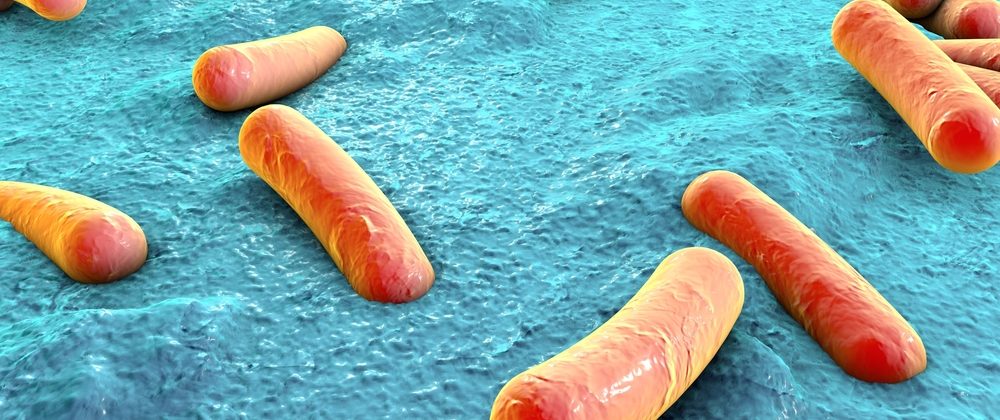A new case report co-authored by Galaxy Diagnostics scientists highlights the importance of bartonellosis being considered as a differential diagnosis when patients present with neuropsychiatric symptoms and skin lesions.
History
Bartonellosis is an emerging multi-system vector-borne disease caused by one or more bacteria belonging to the Bartonella genus. Common Bartonella species infections such as cat scratch disease (CSD) or trench fever are often described as acute and, in the case of CSD, self-limiting in the medical literature. However, chronic symptoms and severe disease related to the heart, joints, and central nervous system (CNS) are increasingly described by researchers.
A 2019 publication by Dr. Breitschwerdt, chief scientific officer and co-founder of Galaxy Diagnostics, his team at NC State University, and a group of collaborating physicians described a boy diagnosed with PANS (Pediatric Acute-onset Neuropsychiatric Syndrome) who was found to have Bartonella henselae in his bloodstream. The boy’s severe neuropsychiatric symptoms and skin lesions resolved in association with antibiotic treatment directed at B. henselae.
Bartonella species primarily occupy two niches in their host: the skin and the vascular endothelium (lining of the blood vessels). Vectors such as fleas, ticks, lice, and biting flies give Bartonella a vehicle to enter the skin and then the local blood and lymphatic vessels. The bacteria then travel through the bloodstream, in association with a relapsing bacteremia, to other areas of the body, potentially causing a wide variety of symptoms that can span months, years and possibly decades.
Newly Published Research
A new set of cases described by Dr. Breitschwerdt and a multi-institution collaborative team provide further evidence for neuropsychiatric and dermatological manifestations of bartonellosis in pediatric (< 18 years old) patients.
Dr. Breitschwerdt explained, “Based upon the limited case reports and this case series, it is imperative to design studies that will determine if, or to what extent, Bartonella species might contribute to concurrent cutaneous [skin] lesions in patients with neuropsychiatric symptoms.”
At the same time as the team at NCSU has been advancing this symptom research, a team from Fujita Health University School of Medicine in Japan has been advancing the signaling work. They found a protein secreted by Bartonella species that activates the vascular endothelial growth factor (VEGF) pathway.
Where Do We Go From Here?
The pathophysiology of Bartonella species infections in people is complex. While the past 30 years of research has helped elucidate how persistent infections may occur, understanding why the host response differs and “atypical” symptoms develop in certain patient populations requires further research. Furthermore, research on these “atypical” manifestations may lead to the development of more accurate tools for Bartonella testing.
More research is needed to document both if Bartonella species might contribute to skin lesions in patients with neuropsychiatric symptoms and the mechanisms by which this might occur. We speculate that long-standing microvascular injury induced by these bacteria may result in chronic inflammation, local mast cell activation and collagen injury.
We encourage dermatologists and veterinarians to consider vector and animal exposures in patients with unusual or unexplained cutaneous lesions and consider testing these patients for Bartonella species infection.
We have found that advances in the understanding of skin lesions so far has been serendipitous, such as when a veterinarian’s own animal develops skin lesions and there are enhanced opportunities to collect samples. The more scientific inquiry is systemized across human and animal health (One Health), the faster our understanding of any potential association between Bartonella species infections and skin lesions will grow.
References
Breitschwerdt, E. B. et al. (2019). Bartonella henselae bloodstream infection in a boy with pediatric acute-onset neuropsychiatric syndrome. Journal of Central Nervous System Disease, 11. doi:10.1177/1179573519832014 https://journals.sagepub.com/doi/10.1177/1179573519832014
Maluki, A. et al. (2020). Imaging analysis of Bartonella species in the skin using single‐photon and multi‐photon (second harmonic generation) laser scanning microscopy. Clinical Case Reports, 2020, 1-7. doi:10.1002/ccr3.2939 https://onlinelibrary.wiley.com/doi/full/10.1002/ccr3.2939
Tsukamoto, K. et al. (2020). The Bartonella autotransporter BafA activates the host VEGF pathway to drive angiogenesis. Nature Communications, 11, 3571. doi:10.1038/s41467-020-17391-2 https://www.nature.com/articles/s41467-020-17391-2


